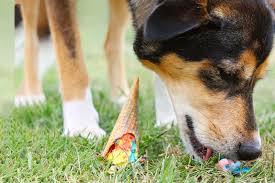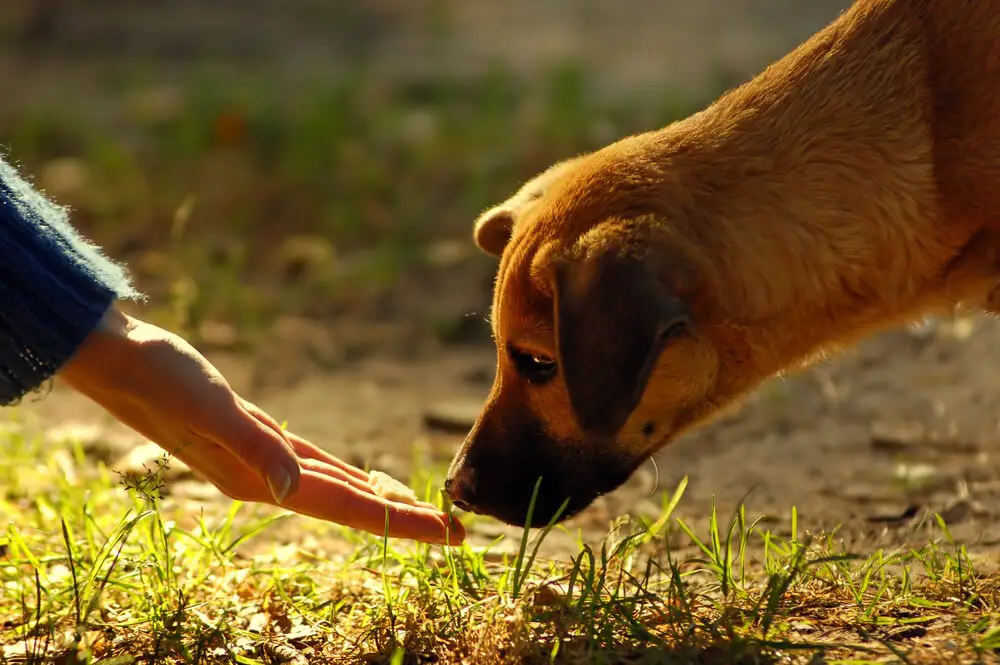We all love walking our dogs, especially when they are well trained on how to walk a dog on a leash. However, I have discussed in our previous post that sometimes there are specific problems that can face your dog. One of them can be eating during walks. I thought it would be nice to go into this topic and how we can quickly and easily prevent our dogs from eating anything during walks.
Here are the steps to take that can prevent your dog from eating during walks:
- Grab something that’s not exciting for your dog
- Teach him the command
- Increase the duration
- Change the objects
- Start combining leave it with Come
- Start giving him something in his mouth
- Move slowly to the streets
- Manage real-world scenarios
- Start paying close attention during your walks
“He doesn’t stop eating from the street, I can’t do anything about it.”
That’s a famous statement that I hear whenever I am at the Vet. It is a common problem that all new puppies face and sticking to our pattern, I have always liked to diagnose the causes of any behavior problem before suggesting fixes. So, let’s start to look at the core of this problem.
Reasons for eating from the streets
I guess you already know the answer, it’s curiosity.
As always, puppies are curious. They want to discover everything around them, they don’t know that they can suffer from any disease or parvo. They want to explore the world around them.
I really adore this behavior. It is just like a baby who is trying to discover the world around him, and he thinks that all the world is beautiful and sweet without any disease.
Our main goal is to handle how he should discover the world (not to stop him from doing so.) We can never stop a dog from exploring the world around him, this is an instinct, and we have to adjust it, not to stop it.
Precautions
As I said in my previous article, never walk an unvaccinated dog. No matter what happens, an unvaccinated dog means that he could catch many diseases without you actually noticing. That was my mistake with Kira which could lead to her death (luckily, I saved her), please don’t do it.
Why should you care about stopping your dog from eating from the street?

No, dogs’ stomach isn’t that hard. They can’t eat anything and survive like these popular rumors. Instead, they have a great probability of catching diseases if a virus or parasite enters their stomach. That’s why you have to train your puppy from his young age that sniffing is allowed, but eating isn’t. It’s completely OK if you have to get some things out from his mouth while walking for the first couple of times, but you have to be fast and teach him from the first day not to eat from the streets.
the training
Training for this behavior isn’t that complicated. You have to work on two main objectives to achieve the best results.
- Teach him to “leave it” if he is approaching a foreign object.
- Teach him to “leave it” if he has something in his mouth.
We have to work on those two aspects together to achieve the best results within the shortest period. Let me help you achieve those two things.
Leave it!
“Leave it” command works on two aspects. First, when a dog holds something in its mouth, this command is supposed to make your dog drop it at once. Another thing is that when your dog is approaching something, and you tell the dog, “leave it,” the dog should leave it immediately and move away. We will work on them both as well. Let’s start training:
- Grab something that’s not exciting for your dog: A common mistake that most people do is that they grab at the first session a piece of chicken or a tissue. Actually, these things are fascinating to your dog. You can use them when your dog is really well-trained, but now you have to start with something boring like a piece of wood, a wire, etc.
Choose something that your dog isn’t very interested in to make it more comfortable in the first couple of sessions. - Tell him the command: Now, when you put the object in front of your dog, tell him to leave it and immediately give him a treat. Don’t push your dog away from the object that you have put, tell him, “Leave it,” and try to grab his attention to you. Once he does this, immediately give him a treat for being such a good boy!
- Increase the duration: Now start putting things in front of him and tell him to leave it and start walking around. Increase the duration bit by bit before giving him the treat. Don’t push your dog, take a small step once at a time.
- Change the objects: Now, start putting new objects like tissues, toys, treats, etc. and start doing the same steps. Start by a very low duration like 1-2 seconds, then increase it up to 15 seconds then remove the object.
- Start combining leave it with Come: In the street, you want to make sure that your dog is safe by staying away from foreign objects. So start connecting both commands by using a more valuable treat like chicken, then tell him “Leave IT” and then come by a fluffy voice. Make sure to treat him well!
- Start giving him something in his mouth: This is the most essential part. Start giving him a dull object in his mouth, then tell him to leave it while having a treat. So he will let go of it to get the reward instead, and you then reward him. It will be comfortable at first with dull objects. However, the challenging part will be when he has tissue in his mouth.
You have to take it one step at a time as usual and always remember to offer him something more valuable than the object that he has. - Move slowly to the streets: Start by repeating the same steps that we mentioned above in the backyard or in front of the house (make sure that this place is clean of any exciting smells) then move slowly to the streets.
- Manage real-world scenarios: A great thing that I did with my dog is that I went alone in front of my house, put some tissues, and then returned to walk my dog from the same place where I have put the fabric. You can start putting different objects to teach your dog with the real-world scenarios (instead of the surprise of finding something on the ground.)
Always give him a reward when he leaves what you have put (Don’t forget to pick it up after you have finished.) - Start paying close attention during your walks: Now, the last step is actually to prevent him from grabbing anything from the ground. When you are going on a walk, make sure to fill your pocket with some treats and try to look ahead while you are walking. If you caught something on the ground, make sure to prepare the treats and say the command at the right time.
You may want to bribe your dog with some exciting voice to actually come to you, but once you succeed, you can repeat this over and over, and your dog will leave everything automatically.
That’s a great video by Zak George describing the leave it technique:
Tip
If your dog is very hyper and you can’t even proceed step one with him, consider playing with him before starting the training. Also, feeding him before exercise will assist you when you are trying to teach him to stay away from food on the ground.
If your dog can’t leave the object, then consider telling him to Stay before telling him the leave it command.
I would also recommend working on the impulse control of your dog (which is another thing). That’s a great video by Sara Carson (THE AMAZING TRAINER) describing that process:
Conclusion:
That was a quick guide to help you have better walks 🙂 and get control over what your dog grabs from the streets.
We are still writing more guides to help you have a better relationship with your dog. Please let us know if you are facing any behavior with your dog that you want to stop it, and we will work on an article for you mainly, yes! YOU!
Also, consider leaving us a comment to tell us if the article was actually helpful 🙂

